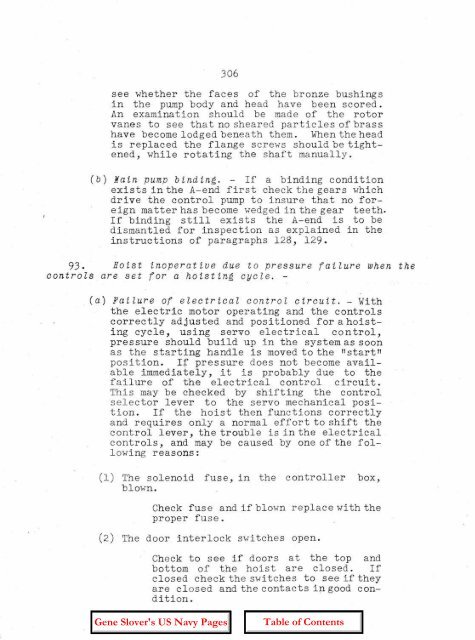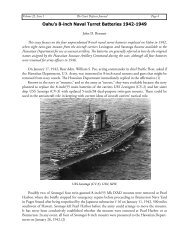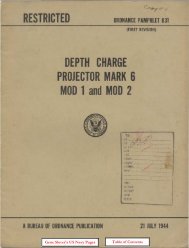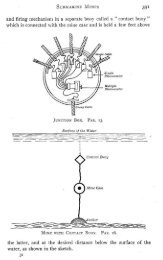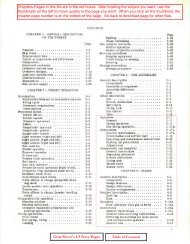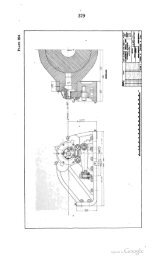OP-755 Part 2 Pages 197-401 - Personal Page of GENE SLOVER
OP-755 Part 2 Pages 197-401 - Personal Page of GENE SLOVER
OP-755 Part 2 Pages 197-401 - Personal Page of GENE SLOVER
Create successful ePaper yourself
Turn your PDF publications into a flip-book with our unique Google optimized e-Paper software.
306<br />
see whether the faces <strong>of</strong> the bronze bushings<br />
in the pump body and head have been scored.<br />
An examination should be made <strong>of</strong> the rotor<br />
vanes to see that no sheared particles <strong>of</strong> brass<br />
have becomelodged beneath them. Whenthe head<br />
is replaced the flange screws should be tightened,<br />
while rotating the shaft manually.<br />
(b) s a t n pump bind ing. - If a binding condition<br />
exists in the A-end first check the gears which<br />
drive the control pump to insure that no foreign<br />
matter has become wedged in the gear teeth.<br />
If binding still exists the A...:.endis to be<br />
dismantled for inspection as explained in the<br />
instructions <strong>of</strong> paragraphs 128, 129.<br />
93. Hoist inoperative due to pressure failure when the<br />
controls are set fo~ a hoisting cycle. -<br />
(a) Failure <strong>of</strong> electrical control circuit. - With<br />
the electric motor operating and the controls<br />
correctly adjusted and positioned for a hoisting<br />
cycle, using servo electrical control,<br />
pressure should build up in the system as soon<br />
as the starting handle is movedto the IIstart II<br />
position. If pressure does not become available<br />
immediately, it is probably due to the<br />
failure <strong>of</strong> the electrical control circuit.<br />
This may be checked by shifting the control<br />
selector lever to the servo mechanical position.<br />
If the hoist then functions correctly<br />
and requires only a normal effort to shift the<br />
control lever, the trouble is in the electrical<br />
controls, and may be caused by one <strong>of</strong> the following<br />
reasons:<br />
(1) The solenoid fuse, in the controller box,<br />
blown.<br />
Check fuse and if blown replace with the<br />
proper fuse.<br />
(2) The door interlock switches open.<br />
Check to see if doors at the top and<br />
bottom <strong>of</strong> the hoist are closed. If<br />
closed check the switches to see if they<br />
are closed and the contacts in good condition.


